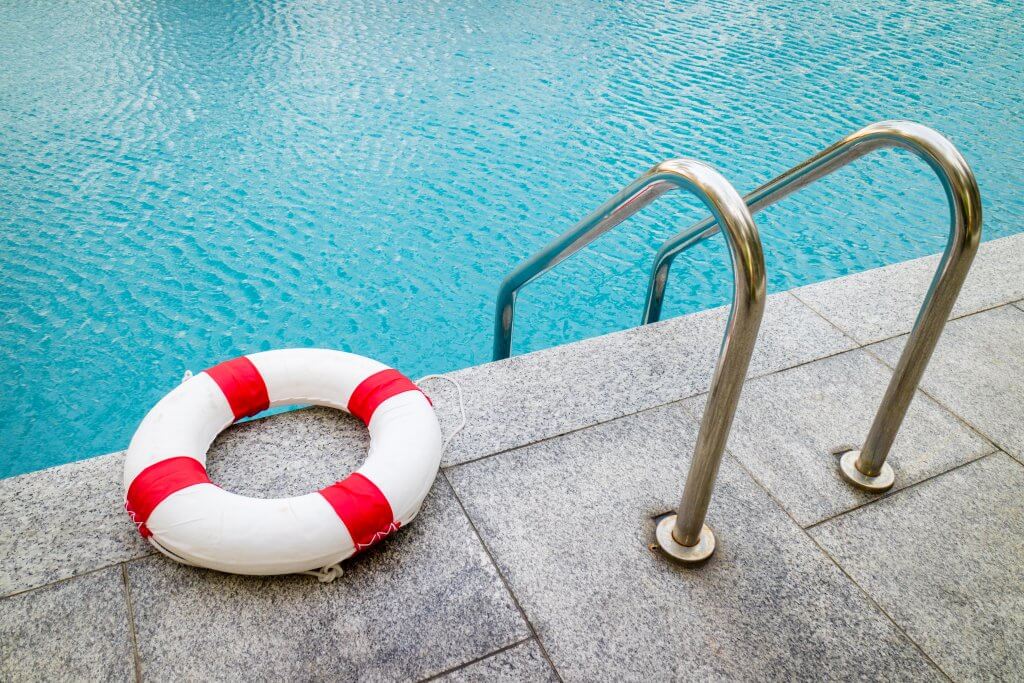On hot summer days, the pool is a fun way to stay cool, get exercise, and burn energy off children. As much fun as pools can be, they should only be enjoyed responsibly. According to the CDC, drowning is still the leading cause of death in children ages 1-4 and the second cause in children ages 5-9. Clearly, drowning is a concern worth guarding against. Instead of completely avoiding the pool or being crippled with fear by these stats, you need to make a plan. When you have a safety plan, your family can enjoy all the benefits of a pool without worry. As experts in the pool industry, J & M Pool Company wants to help you maximize the swimming season and your peace of mind with these tips:
1. Talk with Your Family—Since drowning can occur in a few minutes and in under two inches of water, you need to have your family informed. In the same way you discuss dangers, such as the street, strangers, hot stove, etc., talk to your children about the dangers of water. The goal is not to induce fear, but rather to help them understand water is a wonderful thing to be enjoyed, but only with an adult present.
2. Secure Your Pool—Children are fast, and parents are distracted so having safeguards on your pool will help you protect your kids. A fence is a must if you have young children. Your fence needs to not have wide gaps, be tall enough (generally 5 ft or more), not have more than 4 inches clearance below the fence, and equipped with a self-closing, self-locking, swinging out gate. This fence could be a permanent variety or a temporary mesh one. We are happy to help you find the right fence which fits these requirements, your needs, and budget. In addition to a fence, pool safety covers are a wise idea to protect children, especially during the off-season. Every layer of protection you can add will benefit your family. Having alarms for your doors, windows, gates, and even doggy doors when opened can also help. Our team has extensive experience with pool safety and would be happy to consult with you about child security measures.
3. Put Down Your Phone—For all the benefits phones have given us, they have enabled us to become extremely distracted. Distractedness is dangerous in a lot of scenarios, but especially at the pool. Drowning is described as a silent killer because most drowning victims do not flail, splash, or call for help. They generally drown upright with their head tilted back. In the time you spend scrolling Instagram, your child could be put at risk. When your child is playing near the water, be on the look out constantly.
4. Watch, Watch, Watch—Especially when larger groups or pool parties are underway, kids can be overlooked. If a group of parents are present and you want to trade off on being the lifeguard, make sure to have a designated plan without any confusion. Sometimes, a physical object as a reminder can be helpful for reminding the person on duty to have their eyes on the water 100% of the time. Even if you have a designated person or lifeguard, all adults around a pool should be paying attention to the children.
5. Store Toys Away from the Pool—Kids can get fixated on a toy that is out of reach. If your toys are stored out of sight, the kids have fewer incentives to want to get into the pool area.
6. Have your Drain Inspected—In 2008, a law passed about having anti-entrapment drain covers installed to prevent drowning by entrapment. Since the law passed, there have not been any deaths reported by drain entrapment. If you are unsure whether your pool is equipped properly with this sort of cover, contact J & M for an inspection to give peace of mind.
7. Use, But Don’t Depend on Floatation Devices—There are countless options to help non-swimming children in the pool, but not all floaties are created equally. Make sure to select a floatation device which has been approved by the Coast Guard. Even if a device is approved, do not depend on this device fully. Make sure your non-swimming child is always within reach of help.
8. Prioritize Swim Training—When your child is ready, consider enrolling your children in swimming lessons, especially if you have a home pool. Children, even as young as one, can learn to swim or at least float if they fall in a pool on accident.
9. Learn CPR—Simply put, CPR saves lives. Do not depend on emergency services because CPR needs to be performed right away. Prepare yourself by knowing CPR and basic first aid if an emergency occurs in the water or otherwise.
When you have considered pool safety fully, your family can enjoy the refreshing pool without fear. Blow up your innertube, get out the swimsuits, and enjoy your summer!
"I recommend these guys. They helped me with a lot of problems I was having with my pool and I have them doing the weekly maintenance now. Craig gives excellent service and explains everything he does."



